This entry includes a walking tour! Take the tour.
Introduction
Text-to-speech Audio
Images
Captain W.D. Thurmond, founder of the town.
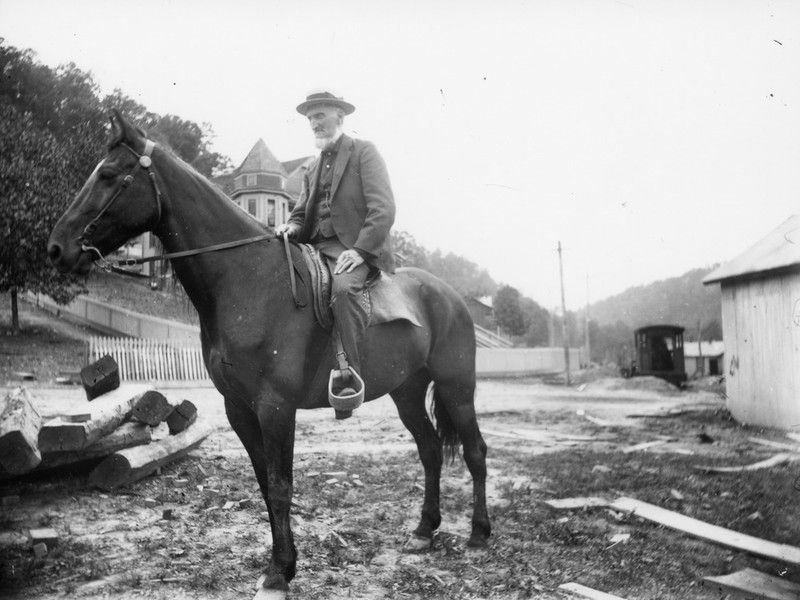
A group of coal operators stand on the train platform in Thurmond the year the town was incorporated, 1901.
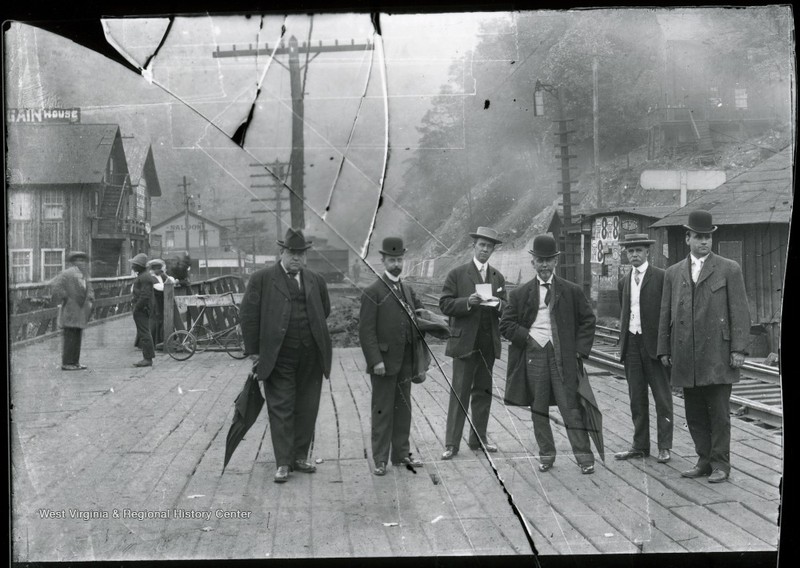
Thurmond’s Main Street, which faced the railroad tracks.
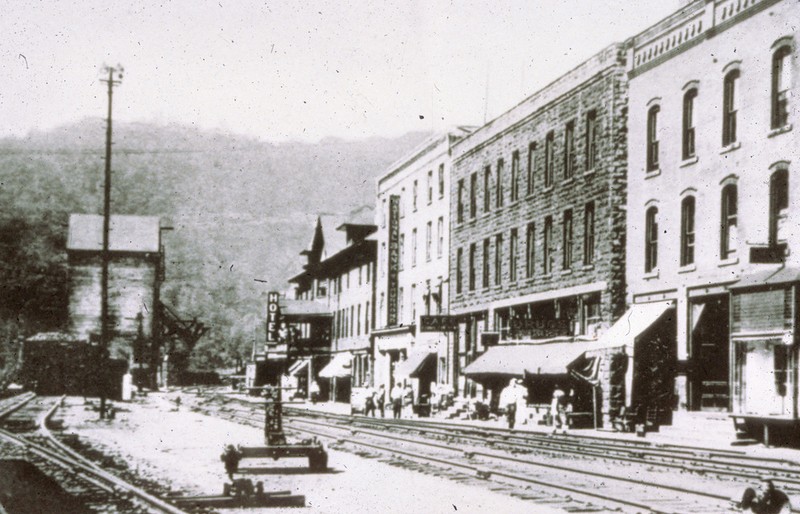
These three buildings are all that is left of Thurmond's main street.
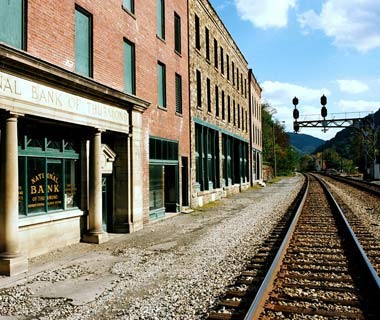
The Chesapeake and Ohio Bridge in 1906.
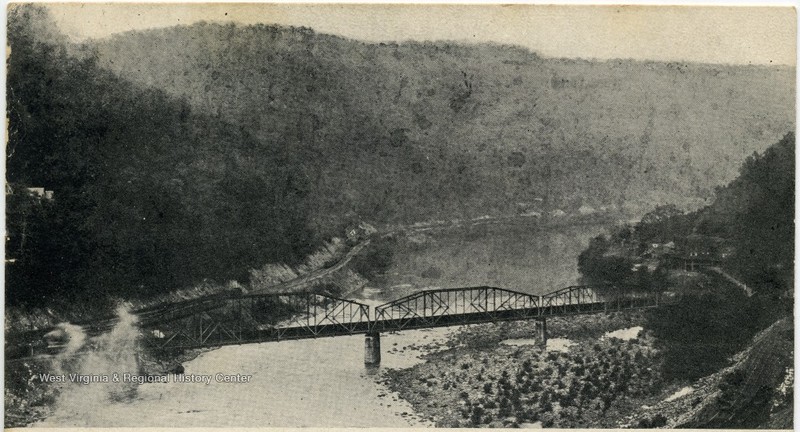
Thurmond from across the river, 1920.
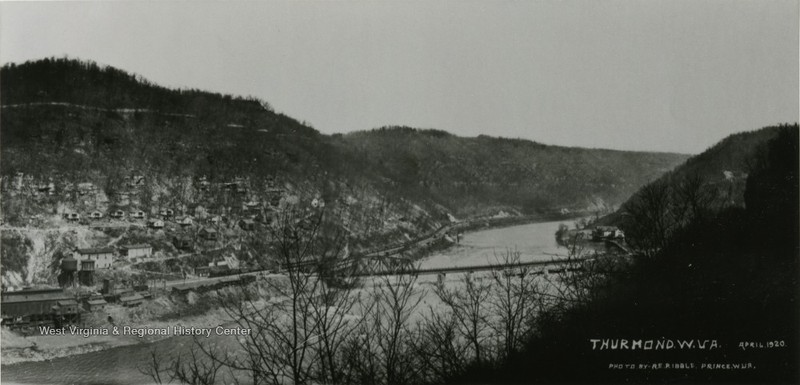
One of Thurmond’s residential neighborhoods.
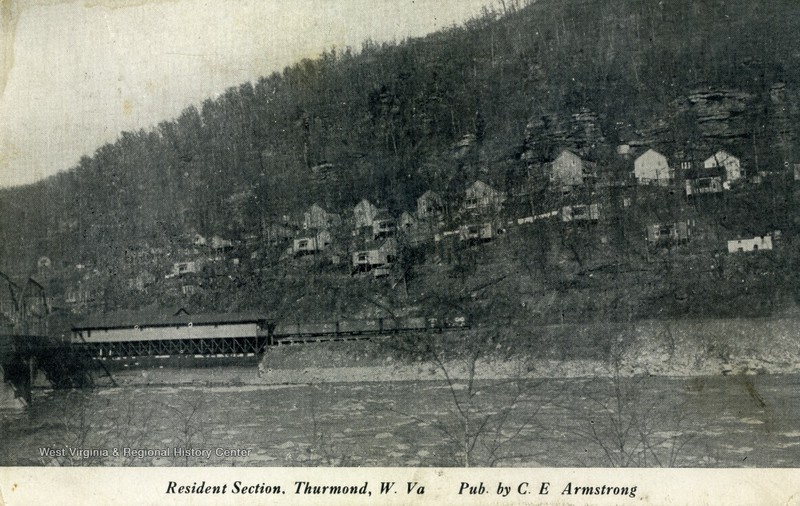
This image of Thurmond after a major fire shows the extreme extent of the destruction.
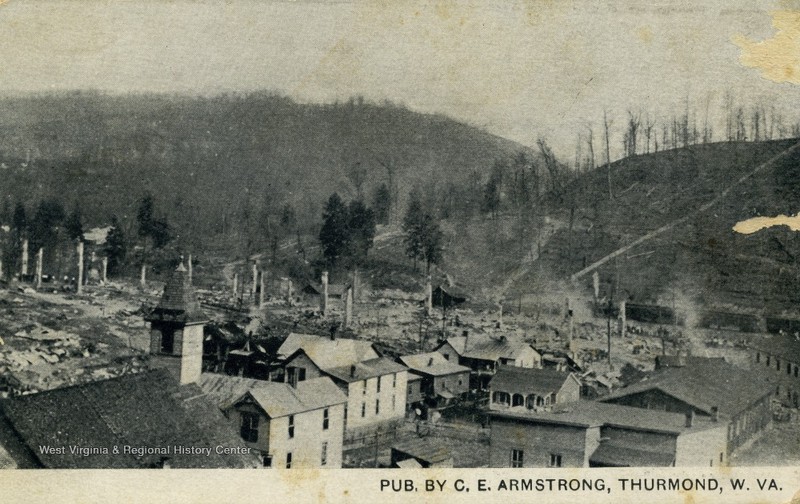
Thurmond’s five residents frequently gather in its one room town hall to manage the town.
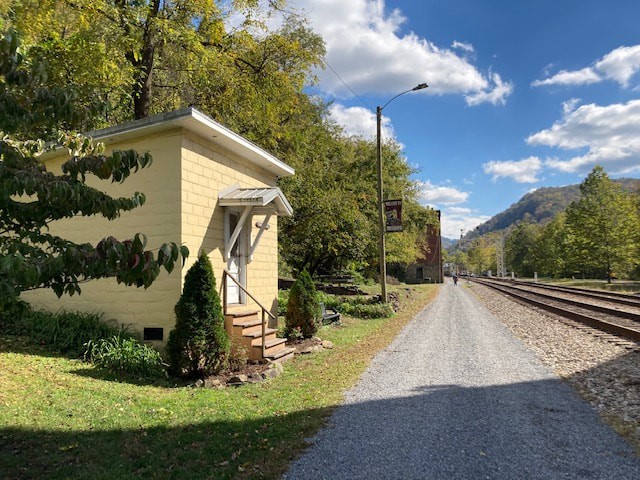
Backstory and Context
Text-to-speech Audio
Thurmond, also known as "The Heart of the New River Gorge" is a small town located along the New River in Fayette County, West Virginia. Captain W.D. Thurmond established the first buildings at this location in 1873 when he correctly anticipated the importance of the Chesapeake and Ohio Railway (C & O). The town was incorporated in 1901 by Thurmond, thirty years after the captain had founded it. Due to the town’s massive output of coal, Thurmond became the center of commerce along the C & O Railway. To supplement the town’s surging coal economy, houses, hotels, banks, businesses, and eateries began to line the hillside along the New River. At Thurmond’s peak, it boasted several restaurants, clothing stores, a jewelry store, and a movie theatre. The National Bank of Thurmond and the New River Banking and Trust Company provided financial services to the area. Lastly, the Thurmond Hotel (later the Lafayette Hotel) and the Dun Glen Hotel provided entertainment and lodging for locals and travelers alike. The reputation of the Dun Glen Hotel to provide enjoyment to the point of excess earned Thurmond the moniker, “Dodge City of the East.” W.D. Thurmond envisioned his town as a morally strict and religiously puritanical organization, but it quickly grew beyond his sole dominion.
According to Sherman Cahall, “The growth was so great that during the first two decades of the 1900s, Thurmond handled more freight than Richmond, Virginia and Cincinnati, Ohio combined. 95,000 passengers utilized the depot yearly and over 150 people worked for the railroad in town as laborers, brakemen, or dispatchers.” [1] Upwards of eighteen train crews operated within Thurmond, along with supervising personnel, to make sure the trains operated efficiently and that coal was transported safely. The National Register of Historic Places states that “by 1910, Thurmond produced $4.8 million of freight revenue for the C & O, which was almost 20% of C&O’s revenue.” [2]. Thurmond was one of the richest coal producing areas of the state with many coal operators as patrons, including Henry Ford and his Fordson Coal Company.
The First World War hindered Thurmond’s growth and set it on a downward trajectory. Not only did many men depart the area to serve, but reliance on coal actually waned during the war. The town’s heyday ended in earnest with the onset of the Great Depression. The local economy waned after several businesses closed, including the National Bank of Thurmond. Two large fires in the early 1930s also wiped out multiple buildings. By the 1940s, the C & O Railway changed from steam to diesel locomotives. The National Park Service states that, “Thurmond had been a steam town, its rail yard and crews geared toward the short service intervals of steam locomotives. The switch to diesels left many of the railyard structures and jobs obsolete” [3]. This switch resulted in the final chapter of Thurmond’s remaining prosperity, as the railroad offices in the town closed in 1984. However, the entire town was included in a historical district that year and placed on the National Register of Historic Places. The Thurmond Depot still functions as a working stop on Amtrak's Cardinal Line. This route runs from Chicago to New York, right through the heart of the New River Gorge. It requires a reservation for the train to stop in Thurmond, otherwise it travels thirteen miles upstream to the station at Prince, West Virginia.
Thurmond is but an echo of its former glory but still offers a rare experience. Tourism within the New River Gorge Park continues to attract people to the historic town. Thurmond has hosted the Guinness Book of World Records’ longest poker game and was voted as one of Travel & Leisure's coolest ghost towns in America. In 1995, the Thurmond Depot was partially restored by the National Park Service and now serves as a visitor center and museum for people interested in learning about more the yesteryear of the New River Gorge region. The remaining five residents are also committed to revitalizing the town. In 2015, Thurmond made national news when the five residents unanimously passed a measure banning employment, housing, or public accommodation discrimination on the basis of gender or sexual orientation. Despite the tiny population, Thurmond hosts the Thurmond Triathlon, is a popular whitewater rafting put-in, and has ample outdoor tourism offerings. Thurmond truly lives up to the town motto: "Where the River meets History.”
Sources
1. Cahal, Sherman. “The (Near) Ghost Town of Thurmond, West Virginia.” Abandoned: Vintage Finds, Photographic Works. Accessed October 16, 2014. http://www.abandonedonline.net/2013/06/11/the-ghost-town-of-thurmond-west-Virginia/
Conley, Phil. History of the West Virginia Coal Industry. Charleston, West Virginia: Education Foundation Inc., 1960.
Lee, Howard B. Bloodletting In Appalachia: The Story of West Virginia’s Four Major Mine Wars and Other Thrilling Incidents of its Coal Fields. Parsons, West Virginia: McClain Printing Company, 1969.
Fair, Jessica M. “Thurmond: The Rise and Fall of a Coal City.” West Virginia Historical Society Quarterly, vol. XIV, no. 3 June 2000. Accessed October 16, 2014. http://www.wvculture.org/history/wvhs1403.html.
3. “Thurmond.” National Park Service. Accessed October 17, 2014. http://www.nps.gov/neri/historyculture/thurmond.html.
“Thurmond Depot.” National Coal Heritage Area. Accessed October 16, 2014.
http://coalheritage.org/page.aspx?id=3.
“Thurmond, WV.” The Great American Stations. Accessed October 17, 2014. http://www.greatamericanstations.com/Stations/THN.
2. Harper, R Eugene. Thurmond Historic District, National Register of Historic Places. September 15th 1983. Accessed April 23rd 2021. http://www.wvculture.org/shpo/nr/pdf/fayette/84003520.pdf.
National Park Service. Accessed April 28th 2021. https://www.nps.gov/media/photo/gallery-item.htm?pg=0&id=3D915394-155D-451F-67DE46390B6FE59E&gid=3D726CBE-155D-451F-67157F056D2286BB.
Trevey, William. “Coal Operators on the Southside Train Platform, Thurmond, W. Va.” Ca. 1901. West Virginia & Regional History Center. Accessed April 28th 2021. https://wvhistoryonview.org/catalog/004523.
“Main Street Thurmond.” National Park Service. Accessed April 28th 2021.https://www.nps.gov/media/photo/gallery-item.htm?pg=0&id=40A51FD1-155D-451F-67F6F345E160705B&gid=3D726CBE-155D-451F-67157F056D2286BB.
“Chesapeake and Ohio Bridge across the New River, Thurmond, W. Va.” 1906. West Virginia & Regional History Center. Accessed April 28th 2021. https://wvhistoryonview.org/catalog/027910.
Ribble, R.E. “View of Thurmond, W. Va.” 1920. West Virginia & Regional History Center. Accessed April 28th 2021. https://wvhistoryonview.org/catalog/012499.
“Resident Section; Thurmond, W. Va.” West Virginia & Regional History Center. Accessed April 28th 2021. https://wvhistoryonview.org/catalog/042040.
“Fire Damage in Town of Thurmond, W. Va.” West Virginia & Regional History Center. Accessed April 28th 2021. https://wvhistoryonview.org/catalog/042112.
Preservation Alliance of West Virginia. Accessed April 28th 2021. https://www.pawv.org/preserve-wv-stories/category/volunteering.
